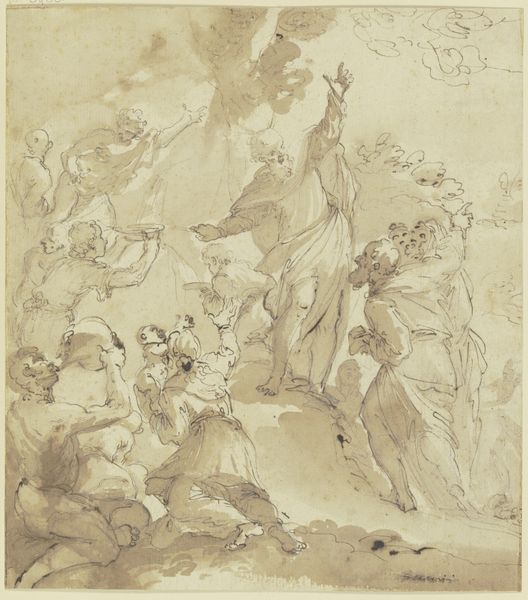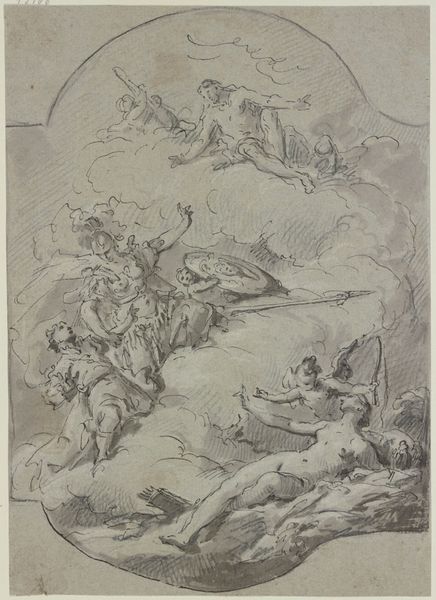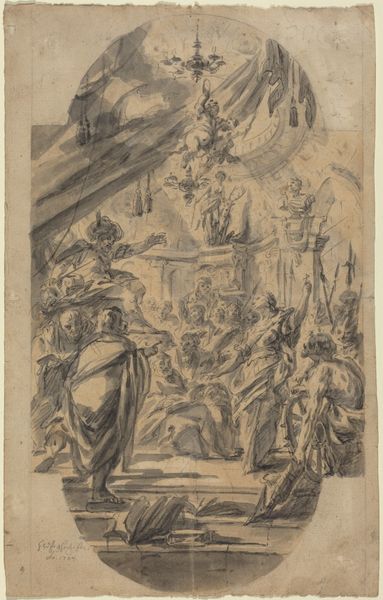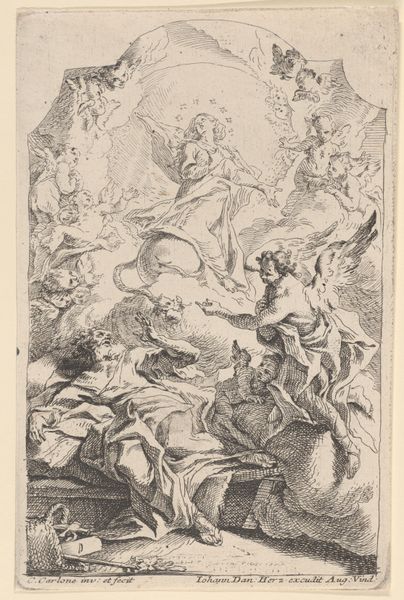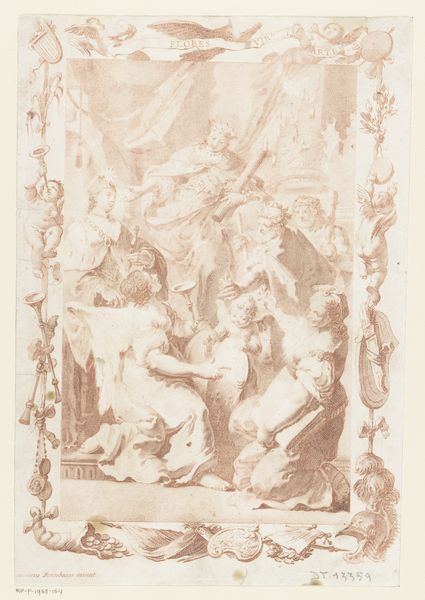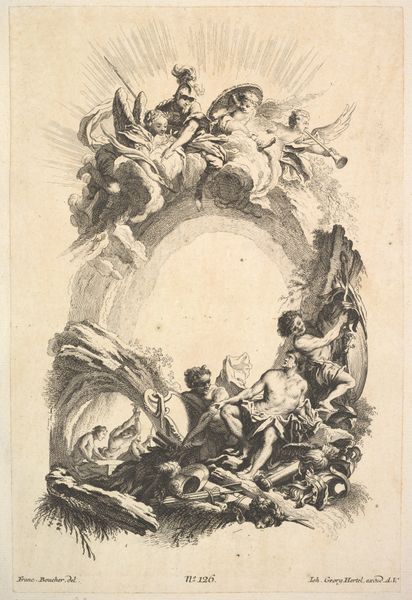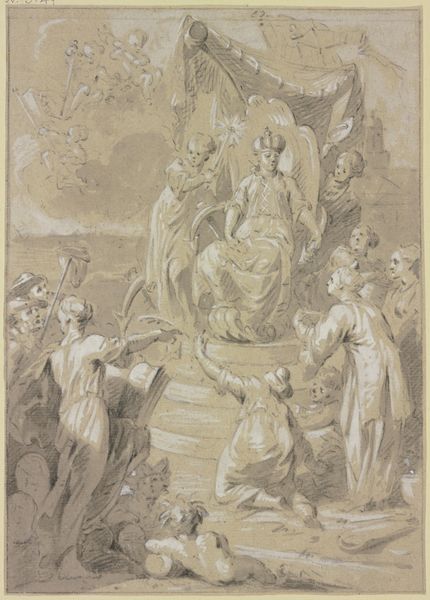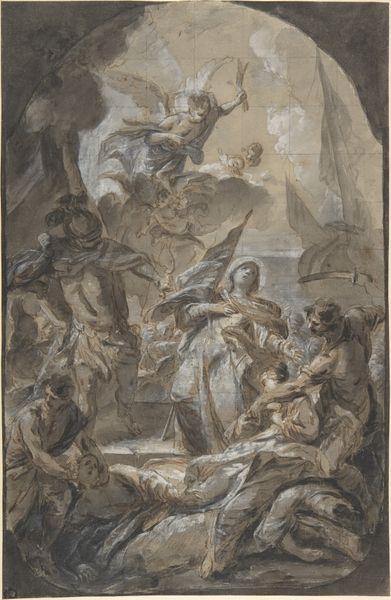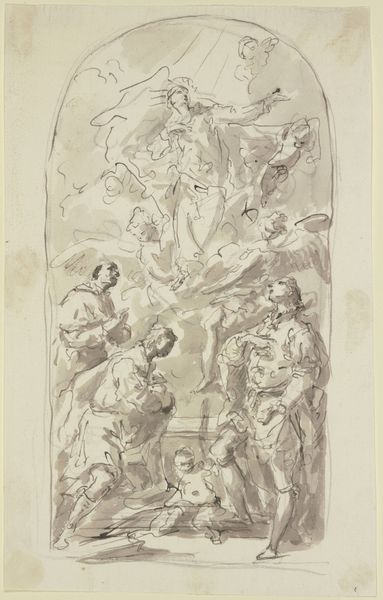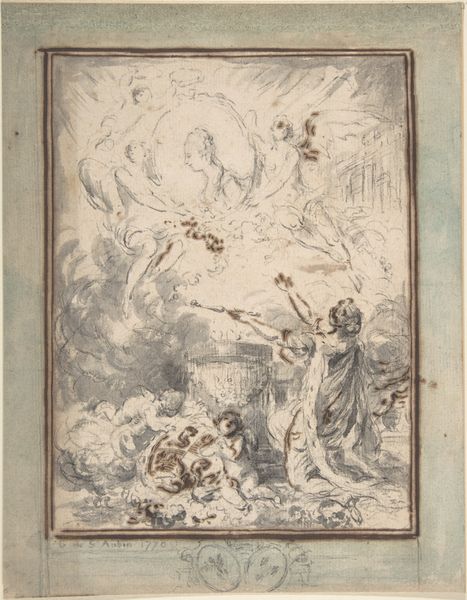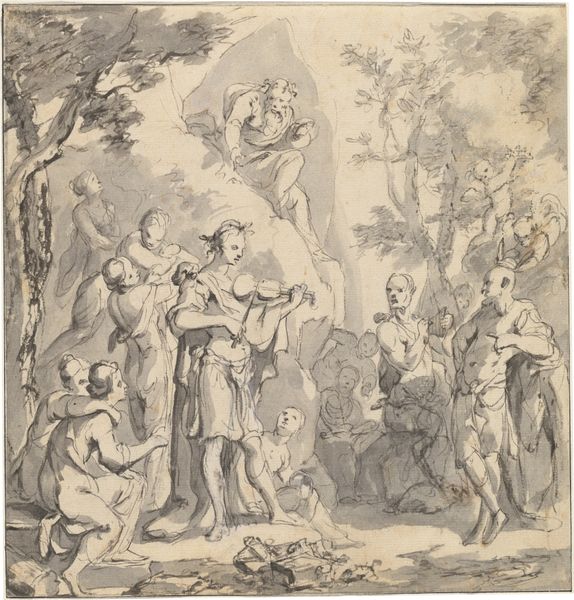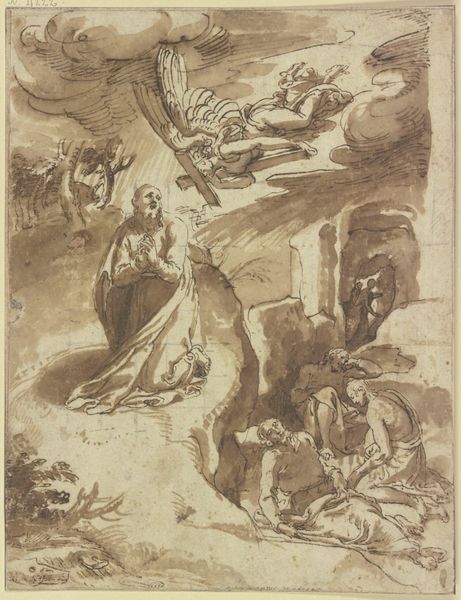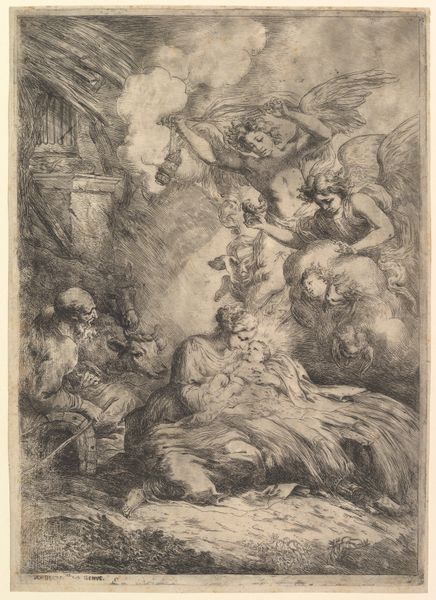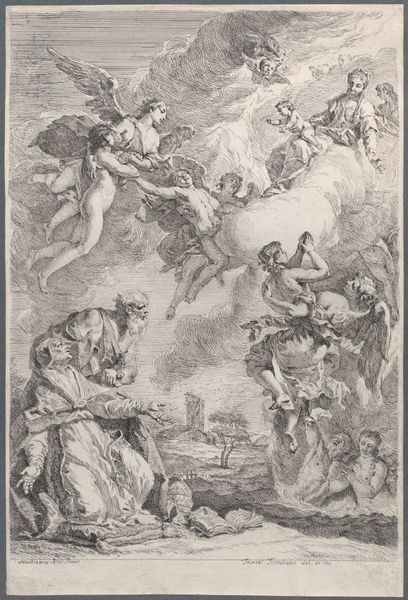
Copyright: Public Domain
Editor: This is Martin Johann Schmidt's, also known as Kremser-Schmidt's, "Baptism of Christ," made around 1780 using ink, gouache, chalk, and other drawing media. There's a somber tone despite the Rococo style and heavenly subject. What's your take on it? Curator: Kremser-Schmidt created this during a time of intense social upheaval. How might this scene of religious purification be read as a subtle commentary on the need for societal cleansing? Note the use of light and shadow - a very theatrical presentation of a ritual rooted in tradition and transition. Editor: Cleansing, as in revolution? It's a pretty gentle scene, though. The angels feel… comforting, almost. Curator: Perhaps "gentle" is how the message slipped past the censors. Remember, depictions of power were often encoded. Look at the racialized undertones often present in depictions of divinity during this period. Who is centered, and who is marginalized, even in a sacred scene? What statement does that visual hierarchy make about the artist's contemporary society? Editor: I never thought of religious art as being so political. I was focusing more on the composition and the use of light and shadow to draw your eye. Curator: Exactly. And within that composition, those choices reinforce certain power structures. What happens when we begin to question those visual narratives? Editor: It’s like unlocking a whole new level of understanding! Thanks, this makes me consider the visual hierarchy and the subtle, encoded ways this work may speak about society.
Comments
No comments
Be the first to comment and join the conversation on the ultimate creative platform.
